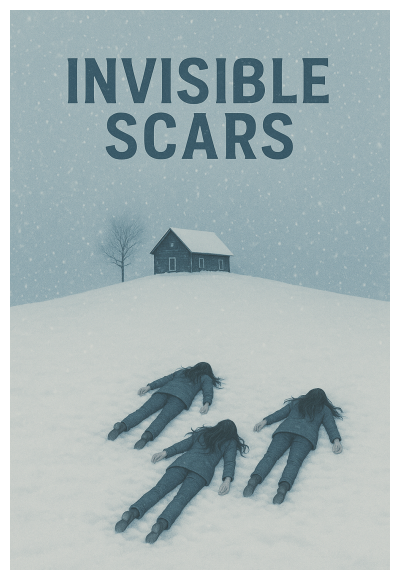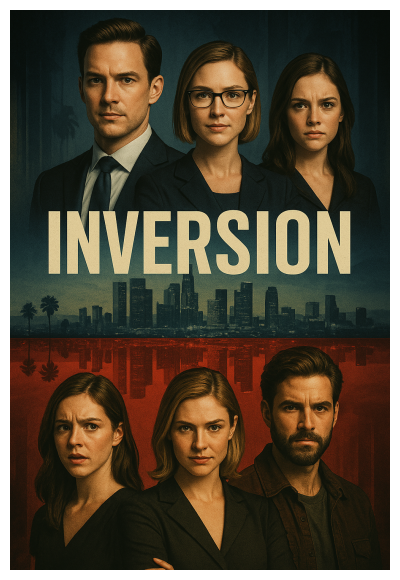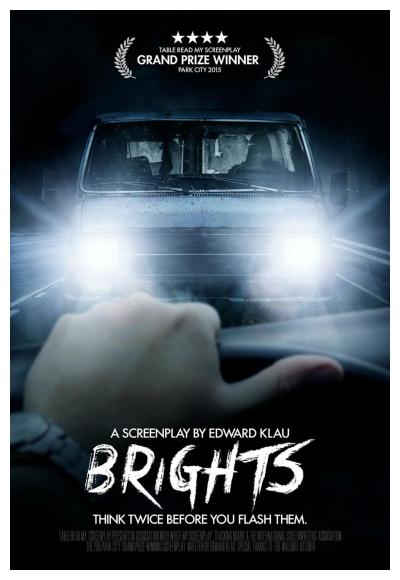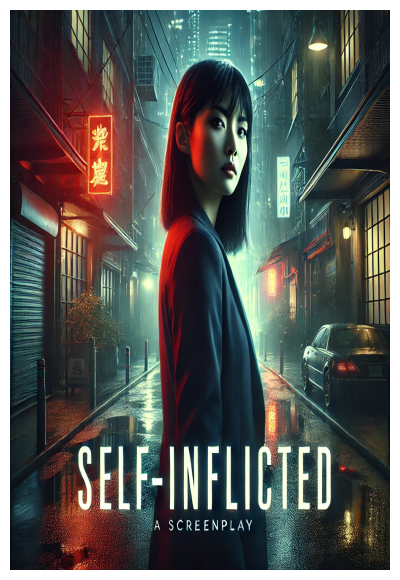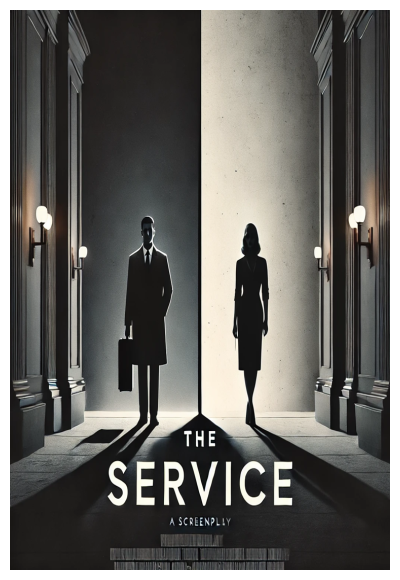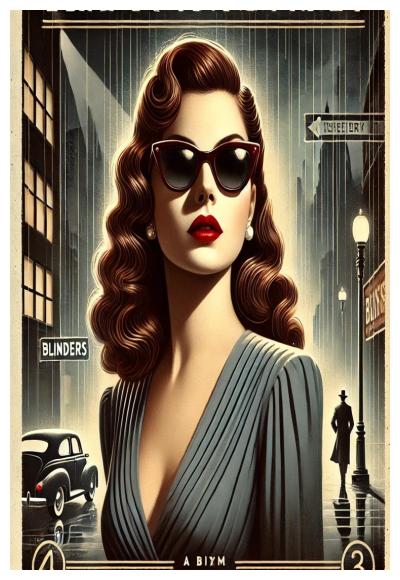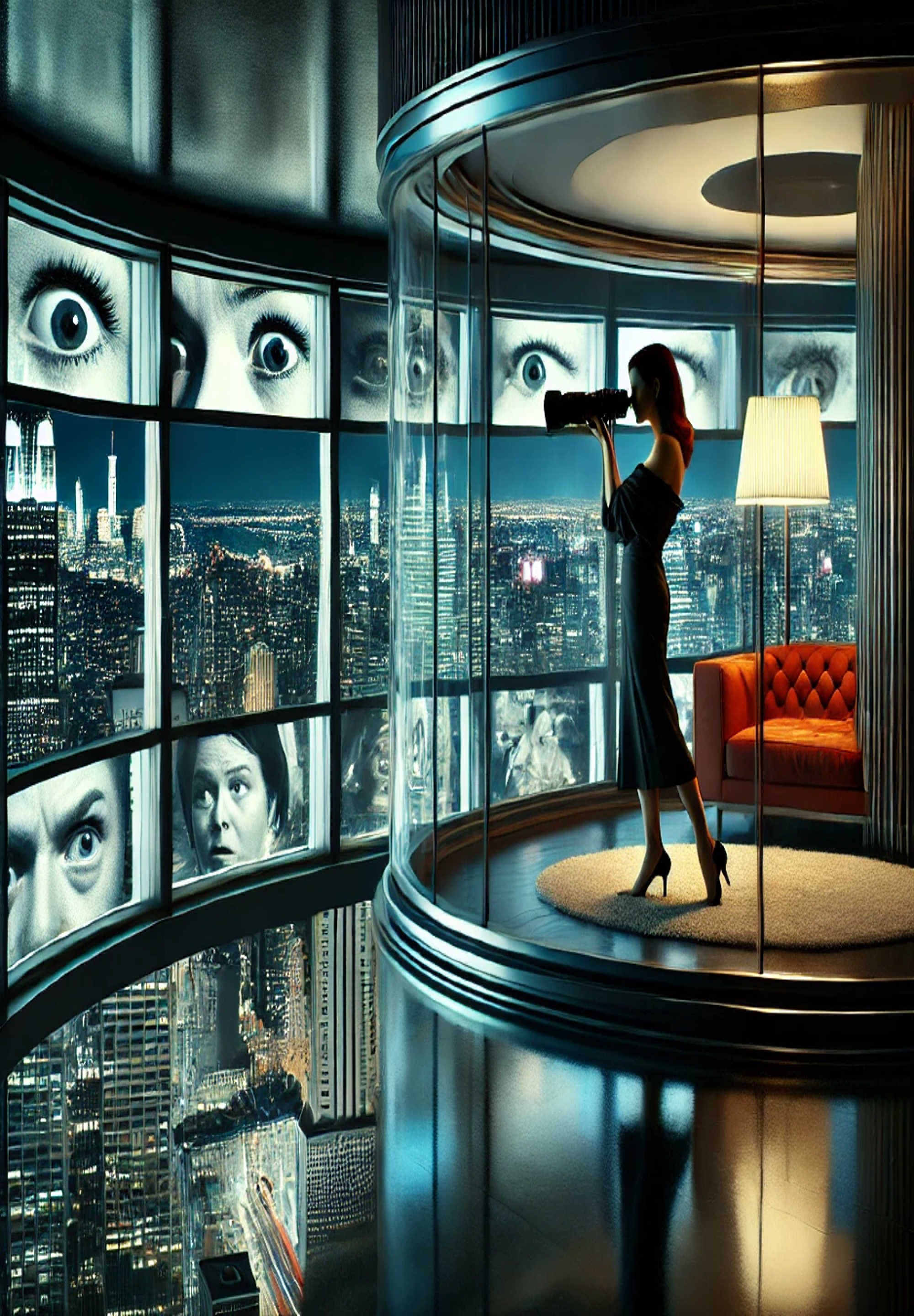
Synopsis/Details
In a towering, glass-walled high-rise apartment in a city ravaged by a mysterious virus, Ingrid Marker—a once-renowned but now disillusioned photographer—watches the crumbling world outside through a telephoto lens. The city has been under martial lockdown for months. Emergency services are inaccessible, corpses line the streets for days, and the only contact with the outside comes via drones, automated alerts, and digital windows. As society has collapsed into isolated survival.
Across the street, in another luxury tower, Ingrid notices a charming man named Jake Bryson watching her through binoculars. Their strange and cautious flirtation begins through exchanged glances, phone numbers scribbled on cardboard, and awkward late-night calls. But just as a human connection seems to spark, Ingrid watches in horror through her lens as Jake is suddenly murdered by a masked figure in a high-tech, light-blinding suit.
Panicked, she tries to stop it—but time proves rigid. Until she discovers that her apartment, once a revolving restaurant converted into a private residence, holds a secret: it doesn’t just rotate—it moves through time. When she rotates left, she goes backward. When she rotates right, forward. Realizing she can rewind time in 90-second increments, Ingrid becomes obsessed with preventing Jake’s death.
She tries multiple times—watching the murder play out in different iterations, each time resetting and approaching the moment with new tactics. But even with foreknowledge, the killer is too fast, too advanced, and Jake too skeptical to act quickly enough. Ingrid is forced to prove to him—using knowledge of his most personal secrets—that she has traveled through time and already seen his death.
As Jake’s skepticism melts, the two begin working together. Using Ingrid’s photos and Jake’s legal background as a public defender, they attempt to identify the killer among their fellow neighbors. Each apartment becomes a new suspect: the mourning woman in a wheelchair; the obsessive writer with a wall of index cards; the graceful but cagey dancer; the aloof fashion designer; the silent couple who’ve divided their living space with tape. Everyone is trapped. Everyone has a motive. Anyone could be the killer.
Ingrid’s rotating time machine becomes not only a tool for survival but a lens into the psychology of isolation and the shifting truths of memory. But time travel comes with unrelenting rules. Ingrid learns she cannot travel past the present moment, cannot physically change the past without consequence, and most devastating of all—if she opens the door to leave the apartment after any alteration, those changes are erased. She begins leaving small injuries on herself to mark her journey and tether memory acr...
Desperate to stop the larger devastation, Ingrid tries to use her time travel ability to prevent the initial outbreak of the virus. She travels back months and attempts to warn federal agents, media outlets, even the local sheriff about Davis Anders, the domestic terrorist responsible for releasing the bioweapon. Her warnings are met with disbelief, bureaucracy, and dismissal. She tries again and again, each time fine-tuning her pitch and timing. In one timeline, she succeeds—Anders is apprehended—but it ...
Realizing the virus' release is inevitable, Ingrid re-centers her mission: save Jake. With each iteration, their connection grows deeper—first based in survival, then genuine trust, then something like love. Ingrid convinces Jake she’s telling the truth by revealing a personal secret he’s never told anyone: an affair with his ex-girlfriend’s sister, Rikka, which ended in tragedy. The emotional vulnerability finally wins him over, and he agrees to collaborate in identifying the killer.
The story becomes a race against time—not to stop the virus, but to expose the masked murderer. Using photographs and carefully-timed interrogations across her neighbors’ daily routines, Ingrid and Jake build a psychological profile. The apartment complex, once a closed system of isolation, becomes a dynamic murder mystery set against the backdrop of a dying world.
In the third act, the killer’s identity is revealed to be far more sinister and complex than a personal vendetta—he is part of a shadowy force tasked with eliminating those who know too much. His technology is advanced. His motives, unclear. As Jake and Ingrid attempt to trap him, the killer adapts, turning Ingrid’s own time loop against her. Each failed attempt to stop him resets the scenario, and she begins to question whether she’s creating the inevitable rather than preventing it.
The climax is a brutal convergence of time, paranoia, memory, and sacrifice. Jake ultimately dies again—but this time, Ingrid is prepared. She loops once more, one final trip backward, piecing together clues not just about Jake’s death but about the very origin of the time machine itself. She goes back far enough to meet the man who built the revolving ring, Robert Sterling, in 1947. Sterling, in voiceover, reveals that time travel did not grant him godlike wisdom, only loneliness, failure.
Returning to the present for the final time, Ingrid must decide how to use her ability—whether to save Jake again or finally turn the camera away from the past and focus on the future. The final shot of the film mirrors its opening: a woman alone, peering through a lens at a world that seems always out of reach. But this time, the camera turns around—to look at her.
All Accolades & Coverage
Finalist, The Golden Script Competition 2024
Semifinalist, Cinequest Screenwriting Competition 2024-2025
Quarterfinalist, Final Draft - Big Break 2024
Top 100, Launch Pad Feature Competition 2023
Story & Logistics
Story Type:
Hero's Journey
Story Situation:
Pursuit
Story Conclusion:
Happy
Linear Structure:
Linear
Cast Size:
Few
Locations:
Single
Characters
Lead Role Ages:
Female Adult
Hero Type:
Gifted
Villian Type:
Pure Evil
Advanced
Subgenre:
Film Noir, Suspense-Thriller, Time or Space Travel
Action Elements:
Hand to Hand Combat
Super Powers:
Transportation and travel
Time Period:
Contemporary times
Country:
United States of America (USA)
Writer Style:
Aaron Sorkin, Jonathan and Christopher Nolan, Scott Frank

